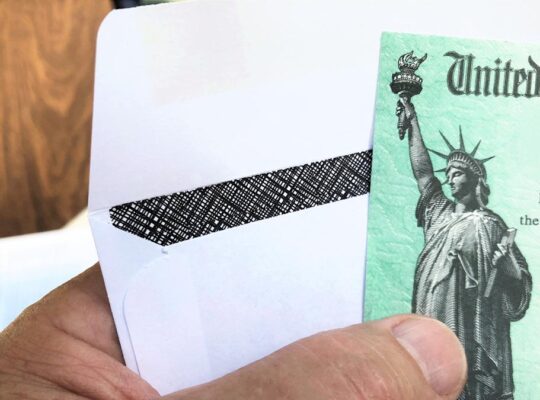T. Rowe Price says there are several moves that people saving for retirement should make by the end of the year. The investment management giant says harvesting losses for tax purposes, reassessing your asset allocation and making catch-up contributions to your retirement plan are three ways to cap the year and position yourself for success in 2022.
Need help planning for retirement? A financial advisor can help. Find one today.
Harvest Your Tax Losses
Tax-loss harvesting is a strategy for offsetting investment gains by selling assets that have resulted in losses. Selling assets that have fallen in value can reduce an investor’s tax liability after they’ve sold assets that have produced capital gains.
“Tax-loss harvesting is one strategy that investors can consider, which involves selling certain positions in a portfolio at a loss, usually in order to offset either short-term or long-term capital gains,” T. Rowe Price wrote in its yearend tips for retirement savers. “Since tax rates on short-term gains are generally higher, offsetting those gains could be particularly valuable.”
For example, an investor in the 24% tax bracket realizes $25,000 in long-term capital gains this year, resulting in a $3,750 tax bill ($25,000 x 15%). However, if the investor also sold a long-term asset that declined in value by $8,000 since its purchase, their gains would effectively drop to $17,000. As a result, the loss would lower the investor’s tax liability to $2,550 and save them $1,200 at tax time.
However, the investment management firm notes that tax-loss harvesting should only be one component of a successful and broad investment strategy. For instance, maintaining a diversified portfolio and staying committed to the long term are more important considerations for investors than a single year’s tax bill, the firm wrote last month in an article titled “How to Improve Your Investment Returns Through Tax-Loss Harvesting.”
“Ultimately, you want to make sure any tax-loss harvesting activities do not alter fundamental elements of your portfolio, such as your asset allocation and risk exposure.”
Investors also don’t need to wait until the end of the year to harvest tax losses. But they shouldn’t necessarily react to daily market fluctuations. Instead, those looking to harvest potential tax losses should keep an eye out for losses of 10% or more throughout the year, the firm wrote.
Reassess Your Asset Allocation
Asset allocation or the mix of stocks, bonds and cash in a portfolio is a key component of retirement planning. How you allocate your money across these three asset classes is likely dictated by your goals and time horizon. Typically, the longer you have before retiring, the more stocks and risk your portfolio should maintain. Your portfolio will likely introduce more bonds as retirement nears and ultimately arrives.
In fact, T. Rowe Price has its own age-based model asset allocations to help guide investors. The firm recommends these asset allocations for the following age groups:
-
20s and 30s: 90-100% in stocks, 0-10% in bonds
-
40s: 80-100% in stocks, 0-20% in bonds
-
50s: 65-85% in stocks, 15-35% in bonds
-
60s: 45-65% in stocks, 30-50% in bonds, 0-10% in cash
-
70+: 30-50% in stocks, 40-60% in bonds, 0-20% in cash
“When it comes to asset allocation, investors should keep a long-term perspective with their strategy and make adjustments throughout their horizon, particularly as they approach retirement or when life circumstances change,” the firm wrote. “While planning for the new year, investors should revisit their asset allocation strategy to ensure it is still on track with their long-term goals.”
As an investor, you may consider rebalancing your portfolio to bring it back in line with your age group’s target asset allocation. For instance, if the stocks in your portfolio had a particularly strong year, you may want to sell a certain percentage of those assets and move the excess money into bonds or cash, effectively rebalancing your portfolio and potentially reducing risk.
Play Catch-Up With Your Contributions
Lastly, if you’re 50 or older, T. Rowe Price recommends making a catch-up contribution to your retirement plan.
In 2021, the IRS caps 401(k) and IRA contributions at $19,500 and $6,000, respectively. But retirement savers who are 50 and over can contribute an additional $6,500 to employer-sponsored plans, like 401(k)s and 403(b)s. This means a person in their 50s can save a total of $26,000 in their 401(k) this year alone. The government also allows a $1,000 catch-up contribution to be made to IRAs, allowing qualified savers to contribute $7,000 in total to a traditional or Roth IRA.
“The extra boost can help savers achieve their savings targets and allow high-income earners to allocate more of their savings to tax-advantaged accounts,” Roger Young, a senior retirement insights manager for T. Rowe Price, wrote earlier this year.
“People with high incomes may have found it difficult to achieve a 15% savings target in their workplace plans due to the standard contribution limits. The availability of catch-up contributions may make it easier to set aside more funds through payroll deductions,” Young added.
Bottom Line
Harvesting losses, reassessing asset allocation and making catch-up contributions are three moves savers can make by the end of 2021 to improve their prospects for retirement, according to T. Rowe Price. While tax-loss harvesting can lower your tax bill, examining your asset allocation and rebalancing where needed can help you stay on target to meet your goals and manage risk. Meanwhile, making catch-up contributions in your 50s can help you boost your retirement savings before you start making withdrawals.
Tips to Better Plan for Retirement
-
Sometimes it’s just better to talk with a professional. A financial advisor can help you create a plan for retirement that can take into account your income needs, tax situation, Social Security benefits and more. Finding a qualified financial advisor doesn’t have to be hard. SmartAsset’s free tool matches you with up to three financial advisors in your area, and you can interview your advisor matches at no cost to decide which one is right for you. If you’re ready to find an advisor who can help you achieve your financial goals, get started now.
-
If you’re still years or even decades from retirement, consider increasing the amount of money you contribute to your 401(k) or IRA. SmartAsset’s 401(k) Calculator can help you determine how much your retirement account will be worth by the time you stop working based on how much you’re saving today.
Photo credit: ©iStock.com/busracavus, ©iStock.com/PeopleImages, ©iStock.com/Rawpixel
The post Saving for Retirement? Investment Giant Says Make These 3 Moves By Years End appeared first on SmartAsset Blog.
Source link















